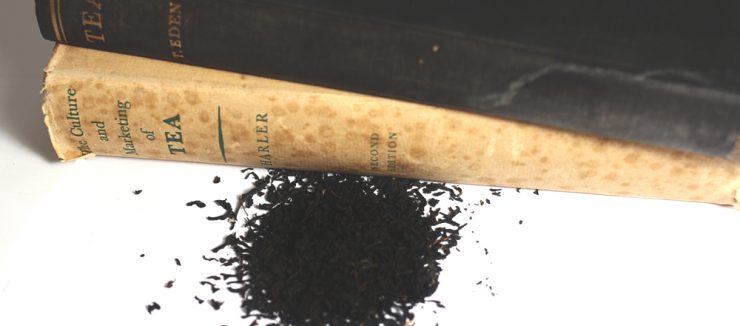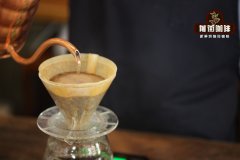Why doesn't China import Kenyan tea? a detailed explanation of the grading system of Kenyan black tea
Loose tea allows you to see, smell, and even hold the tea, allowing you to enjoy the taste of the tea. Take a little time to understand tea, your tea will become more personal and charming, deepening your enjoyment of this charming cultural experience. The grading of tea is determined according to the size and type of tea. Although the size of leaves is an important quality factor, it itself is not a guarantee of quality. Tea is usually named OP or FOP. These names are part of the whole-leaf black tea grading system, which refers to the size of leaves and the number of tea tips. Baimao tea is a kind of tea with two leaves and one bud. OP, also known as Orange White Milk Tea, is a kind of whole-leaf tea without tea tips or buds. FOP, also known as orange and white fragrance, is longer than the leaves of OP and has some buds. The grading system and terminology vary from tea type to country. Generally speaking, the more complete the tea is, the more buds there are, the higher the grade of the tea is. Black tea grade P bud head, shorter than OP leaves OP orange white hair, tightly rolled leaves FOP flower orange white fragrance longer than OP, but not so tightly rolled GFOP golden flower orange white hair, FOP with some golden tip TGFOP golden flower orange white hair with more golden buds FTGFOP tea, BOP broken orange white fragrance

The grading system of Kenyan black tea Kenya's CTC black tea CTC black tea is Kenya's proud product. Kenya began to produce CTC black tea in the 1930s, which has attracted many tea lovers all over the world. Through continuous improvement and organizational learning, Kenya has produced high-quality tea to ensure that you drink differently. The process of CTC black tea begins with leaf withering, and tea leaves wither in a trough or in a withering chamber, which lasts for 16 hours. The leaves are then oxidized and fermented for an hour and a half and then transported to the drying chamber with hot air. The goal is to reduce the moisture to about 3% and change its color from green to black. CTC tea in Kenya is divided into BP1, PF1, PD and Dust1. Their grading is based on the size of the particles. More often, these levels can also attract different markets. The larger the particle size, the smaller the density, the lighter the color and taste of the tea. The smaller the particle size is, the greater the density is, and the darker the color of the tea is, the stronger the taste is. Those who are not in the above grade are classified as Fannings.
Important Notice :
前街咖啡 FrontStreet Coffee has moved to new addredd:
FrontStreet Coffee Address: 315,Donghua East Road,GuangZhou
Tel:020 38364473
- Prev

Honey snow ice city set up nine companies a year. How did it develop? why did it suddenly become popular?
Everyone's impression of the snow ice city is estimated to stay in "you love me, I love you, the snow ice city sweet honey". At the moment, you are still thinking about its sweet side, but you never know that Honey Snow Ice City has set up nine companies a year. According to a report by the Beijing News on September 16, according to enterprise investigations, as of today, Honey Snow Ice City has invested in the establishment of Chongqing Snow King Agriculture.
- Next

Correct Preservation of Coffee beans _ how to determine the Grinding scale of shallow roasted Coffee beans and Deep roasted Coffee beans
Before we start today's topic, let me ask you weakly: when you drank coffee for the first time, did you think that drinking coffee was the same as drinking instant coffee? Do you think that you can drink coffee powder by putting it in boiling water and soaking it (like making tea)? When my friend A Yu heard me ask, he replied, "Yes, the first time I had coffee."
Related
- What effect does Italian American coffee with filter paper have? Will coffee taste better if it is put on filter paper at the bottom of the powder bowl?
- What is the color difference in coffee beans? What are the characteristics of honey processed coffee beans? Why are the anaerobically treated coffee beans uneven in color?
- How does novice Xiaobai quickly get started and make coffee? Newbies learn to make coffee by hand and share the specific steps and process process!
- Costa tea has a shelf life of 100 years?! Expert: Unable to verify
- It's a huge uproar! American milk addition was rejected by Manner employees?!
- Mocha pot coffee bean recommendations| How fine and how much powder should be used for grinding? What parameter ratios do I need to use to make milk with Mocha pot coffee?
- What are the characteristics of the world's top ten coffee beans treated with Costa Rica honey? How to make black honey kadura from Tarazhu Pilon Processing Plant taste good?
- How to make deep-roasted coffee? What grinding water temperature does authentic Jamaica Blue Mountain No. 1 coffee use to brew it well?
- Selected high-grade rose summer coffee flavor tasting guide Why Panama rose summer has the aroma of flowers and fruits
- What equipment does a novice Xiaobai need to buy to learn to make coffee? Filter cup electronic scale bean grinder manual flushing pot purchase guide

